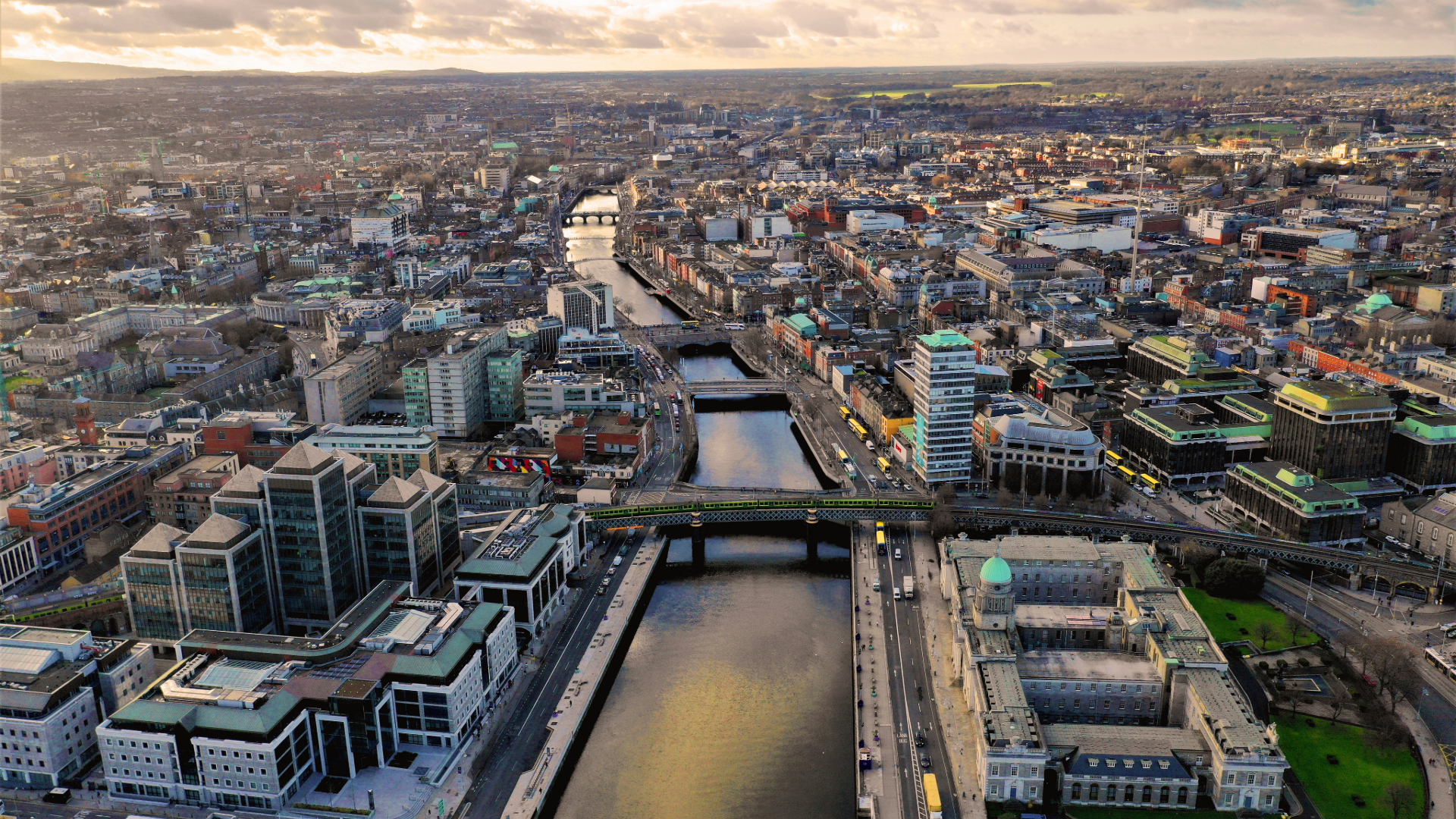Commercial partnership: Crowe
On 1 May 2024 the deadline passed for agreeing a repayment plan with Revenue for tax debt through the warehousing scheme. If your business owes money to Revenue, you didn’t agree to a repayment schedule with Revenue, and you aren’t yet sure of what to do next, read on. Declan Hanly, Corporate Restructuring Director, outlines the options.
Back in 2021, Crowe predicted in our overview of the current and potential insolvency landscape that some businesses with warehoused debts might struggle to meet future tax liabilities, even as the economy rebounded from the pandemic.
As author Declan Hanly argued then, while debt warehousing had been a great assistance to businesses during Covid-19, any tax balance would still have to be settled. Revenue was offering breathing space, not a write-off. With increases in the minimum wage, higher energy costs and various other factors following, that has indeed been the case. There have been some well-documented struggles in some sectors, most notably in construction, retail and hospitality, to meet the urgency and full liability.
Debt Warehousing: The Statistics
Following the 1 May 2024 deadline, the Debt Warehousing Scheme ended. There was a high level of engagement from businesses and their agents in the lead up to the deadline. As at 3 June 2024, 12,747 phased payment arrangements (“PPA”) for a total of € 1.2 bn have been agreed with Revenue.
11,724 businesses, however, did not engage with Revenue, and completion notices were issued to these businesses giving a final opportunity to engage and retain the 0% interest rate on their warehoused debt. A total of 7,042 businesses with warehoused debt greater than €500 did not engage after these reminders were issued. The total debt for this cohort is €100m, which is now subject to standard collection and enforcement at the full interest rates of 8-10%.
As per the table below, construction businesses make up the largest cohort of these taxpayers in both number and value.
| Business Sector | No. of Taxpayers | Tax Debt | ||
| % | €m | % | ||
| Construction | 1,179 | 16.7% | 18.86 | 18.7% |
| Wholesale and Retail Trade | 1,084 | 15.4% | 16.06 | 16.0% |
| Accommodation and Food | 762 | 10.8% | 13.43 | 13.3% |
| Professional, Scientific and Technical | 681 | 9.7% | 11.25 | 11.2% |
| Manufacturing | 408 | 5.8% | 6.19 | 6.2% |
| Administrative and Support Service | 322 | 4.6% | 4.14 | 4.1% |
| Transportation and Storage | 319 | 4.5% | 5.02 | 5.0% |
| Agriculture, Forestry and Fishing | 280 | 4.0% | 3.25 | 3.2% |
| Human Health and Social Work | 279 | 4.0% | 2.02 | 2.0% |
| Information and Communication | 264 | 3.7% | 6.88 | 6.8% |
| Real Estate Activities | 244 | 3.5% | 2.27 | 2.3% |
| Education | 214 | 3.0% | 1.71 | 1.7% |
| Arts, Entertainment and Recreation | 182 | 2.6% | 1.87 | 1.9% |
| Financial and Insurance | 67 | 1.0% | 1.54 | 1.5% |
| All other sectors | 757 | 10.7% | 6.11 | 6.1% |
| Grand Total | 7,042 | 100.60 | ||
While the level of businesses who have agreed a PPA with the Revenue is encouraging, it is likely that some of these businesses will not be in a position to pay their current bills as they fall due and make the necessary repayments to Revenue as part of a PPA. If that describes your current position, or you are one of the businesses who didn’t agree a PPA with the Revenue, there’s a potential solution that — at least so far — has been remarkably underused by business leaders.
The Small Company Administrative Revenue Process offers a solution
We’re referring to SCARP. It gives eligible SMEs the option of restructuring their debt to avoid liquidation. Unlike a PPA, it allows for the writing down of debt, but this is contingent on fresh investment.
| Sample scenario |
| A business owes €100,000 to Revenue and €50,000 to trade creditors. Instead of paying €20,000 a year to Revenue for the next five years (i.e. a PPA agreement), the business settles with creditors for a €25,000 repayment now and the remaining debt is written off. |
Introduced in 2021 to support small and micro companies, SCARP is available only to companies with no more than 50 employees, a turnover not exceeding €15 million and a balance sheet not exceeding €7.5 million.
For an in-depth view of SCARP, read about the step-by-step process here.

Declan Hanly
One of the key features of SCARP is that the company must appoint a Process Advisor (PA) who will make the formal request to Revenue to participate in a rescue plan and will submit a report to say whether the company has a reasonable prospect of survival. Note that the company’s auditor cannot be the Process Advisor.
The other important feature to be aware of is that SCARP allows an “excludable creditor” (which in most cases would include Revenue) to opt out of or reject the process on a number of grounds:
- Previous failure of the company to comply with tax requirements
- The company being currently subject to a Revenue audit or intervention or party to an appeal
In short, if you are not up to date with your taxes, the chances of Revenue entering into a SCARP agreement are reduced, no matter how much you owe. Revenue will assess each business on a case-by-case basis, but if you are not up to date with your taxes, there is no requirement for Revenue to participate in the SCARP. In that scenario, examinership (see below) may be the only option remaining.
As any professional advisor will explain, SCARP also imposes certain other conditions that businesses need to be aware of:
- Additional tax liabilities may be due and must be considered in the rescue plan
- The company must file and pay all taxes on time
- Failure to comply with the terms of the SCARP agreement may result in Revenue applying to suspend the process or place the company into liquidation
Surprisingly, the number of Irish companies entering SCARP arrangements has yet to reach triple figures. One reason, according to Declan, is that companies simply don’t know about the scheme. One suspects that this will change in the next few months as companies explore their options before the deadline arrives.
- Who’s it for? SMEs who owe larger amounts and are insolvent but have a reasonable prospect of trading profitably into the future.
- Advantages: No need to go through the courts and the business can write off a large portion of debt.
- Disadvantages: A downpayment (i.e. fresh investment) is likely required, and if creditors reject the plan, it is likely that a liquidation will follow.
In a business context, SCARP moves fast — just 41 days from the appointment of the Process Advisor to the submission of the rescue plan (and voting). While it’s a far more affordable alternative to examinership for SMEs, the pressure on preparation is considerable.
The advantages of SCARP are compelling for a business under pressure. It can be activated within the narrow timeframe remaining and mitigates the damage done to creditor relationships in the long term.
Unfortunately, the terms and conditions of SCARP take it off the table for larger companies with a higher turnover. For them — and for SMEs with outstanding Revenue debt from previous years — the options are effectively reduced to examinership.
In some cases, examinership might be more appropriate
Unlike SCARP, the examinership route is available to businesses of all sizes (including SMEs), although it tends to be for larger corporations with a more substantial debt. Under the terms of an examinership, the business reaches a court-approved compromise with its creditors, essentially by proposing a better return through restructuring than liquidation would allow.
As with SCARP, fresh investment sets the spirit of the plan. This can be from a third-party investor, existing directors or shareholders, or even via a loan from another business unit within the same group. Whatever the source, the investment must be greater than the sum creditors would have received after liquidation. While not exactly a win-win, examinership is another way to avoid the worst-case scenario.
Key differences between examinership and SCARP
- Examinerships are applied for (and approved) via court, not through a Process Advisor liaising with Revenue and creditors.
- They take longer (up to 100 days) and cost more to execute.
- There is no excludable debt, meaning creditors (and Revenue) cannot opt out. This means that (unlike SCARP) if your tax history shows delinquent payments or anomalies, Revenue debt has to be included.
If a restructuring plan falls apart, an agreement can’t be reached, or conditions can’t be met from the outset, the most likely outcome is liquidation.
What can a business salvage from liquidation?
The end of a company doesn’t have to put an end to business altogether. There’s still the possibility of repurchasing IP from the liquidator, rebooting a lease with a landlord and starting again with a new name. That said, liquidation is arguably the toughest option to manage in emotional terms.
Unlike in the US, where Chapter 11 bankruptcy filings carry relatively little stigma (despite surging 68% in the first half of 2023), Irish directors tend to be more reluctant to put a company into liquidation. Perhaps there’s a stronger emphasis on maintaining good relationships with creditors.
If you are alarmed about the impact debt warehouse tax repayments will have on your business, or you are struggling to meet the timeline for repayment, talk to us today to establish where you currently are in the sequence of steps to consider.
If restructuring is the chosen route and you are seeking to appoint a Process Advisor, Examiner or Liquidator, our corporate restructuring team can provide expert guidance on sending a thorough, persuasive proposal to Revenue.
This is one of those moments where an experienced, professional team can make all the difference. Crowe’s dedicated corporate finance team has a wealth of experience advising SMEs. Talk to Crowe’s corporate restructuring team today about your next step.
Contact: Declan Hanly, Director, Crowe Ireland
T: +353 1 448 2200
W: www.crowe.ie










